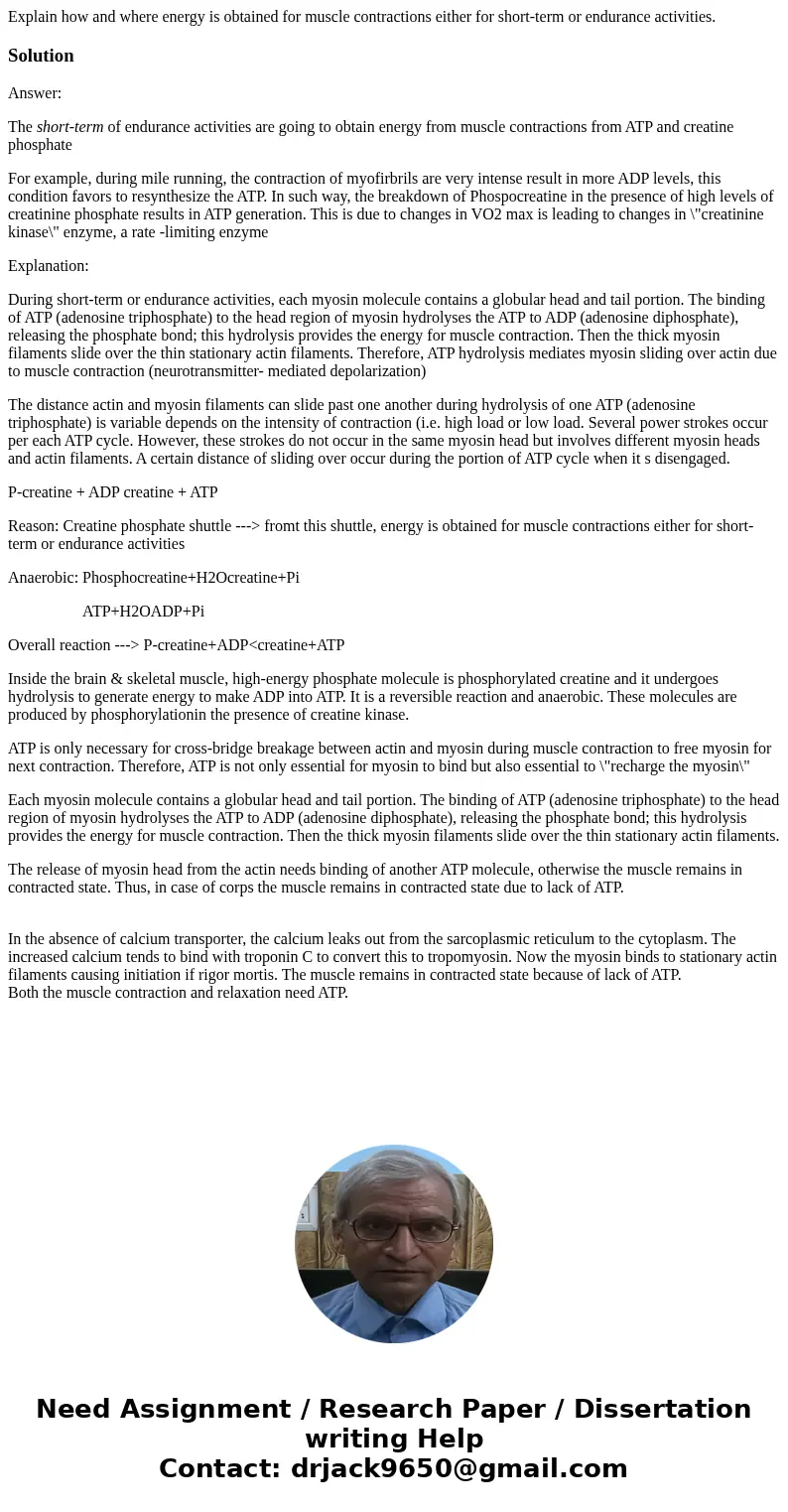Explain how and where energy is obtained for muscle contract
Explain how and where energy is obtained for muscle contractions either for short-term or endurance activities.
Solution
Answer:
The short-term of endurance activities are going to obtain energy from muscle contractions from ATP and creatine phosphate
For example, during mile running, the contraction of myofirbrils are very intense result in more ADP levels, this condition favors to resynthesize the ATP. In such way, the breakdown of Phospocreatine in the presence of high levels of creatinine phosphate results in ATP generation. This is due to changes in VO2 max is leading to changes in \"creatinine kinase\" enzyme, a rate -limiting enzyme
Explanation:
During short-term or endurance activities, each myosin molecule contains a globular head and tail portion. The binding of ATP (adenosine triphosphate) to the head region of myosin hydrolyses the ATP to ADP (adenosine diphosphate), releasing the phosphate bond; this hydrolysis provides the energy for muscle contraction. Then the thick myosin filaments slide over the thin stationary actin filaments. Therefore, ATP hydrolysis mediates myosin sliding over actin due to muscle contraction (neurotransmitter- mediated depolarization)
The distance actin and myosin filaments can slide past one another during hydrolysis of one ATP (adenosine triphosphate) is variable depends on the intensity of contraction (i.e. high load or low load. Several power strokes occur per each ATP cycle. However, these strokes do not occur in the same myosin head but involves different myosin heads and actin filaments. A certain distance of sliding over occur during the portion of ATP cycle when it s disengaged.
P-creatine + ADP creatine + ATP
Reason: Creatine phosphate shuttle ---> fromt this shuttle, energy is obtained for muscle contractions either for short-term or endurance activities
Anaerobic: Phosphocreatine+H2Ocreatine+Pi
ATP+H2OADP+Pi
Overall reaction ---> P-creatine+ADP<creatine+ATP
Inside the brain & skeletal muscle, high-energy phosphate molecule is phosphorylated creatine and it undergoes hydrolysis to generate energy to make ADP into ATP. It is a reversible reaction and anaerobic. These molecules are produced by phosphorylationin the presence of creatine kinase.
ATP is only necessary for cross-bridge breakage between actin and myosin during muscle contraction to free myosin for next contraction. Therefore, ATP is not only essential for myosin to bind but also essential to \"recharge the myosin\"
Each myosin molecule contains a globular head and tail portion. The binding of ATP (adenosine triphosphate) to the head region of myosin hydrolyses the ATP to ADP (adenosine diphosphate), releasing the phosphate bond; this hydrolysis provides the energy for muscle contraction. Then the thick myosin filaments slide over the thin stationary actin filaments.
The release of myosin head from the actin needs binding of another ATP molecule, otherwise the muscle remains in contracted state. Thus, in case of corps the muscle remains in contracted state due to lack of ATP.
In the absence of calcium transporter, the calcium leaks out from the sarcoplasmic reticulum to the cytoplasm. The increased calcium tends to bind with troponin C to convert this to tropomyosin. Now the myosin binds to stationary actin filaments causing initiation if rigor mortis. The muscle remains in contracted state because of lack of ATP.
Both the muscle contraction and relaxation need ATP.

 Homework Sourse
Homework Sourse